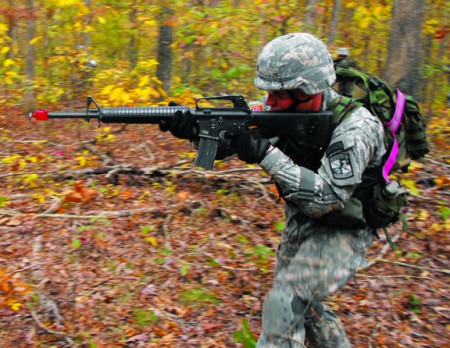
With the rising cost of attending college becoming a greater deterrent for prospective students, enrolling in Reserve Officers’ Training Corps programs has become a much more practical option for students who want to obtain a secondary education and who would otherwise be unable to afford to do so.
Major Paul Denson, Officer in Charge of the ROTC program at Murray State said the benefit that most draws in members to the ROTC is they will have the entirety of their tuition paid for. However, he said, the motivation differs from student to student.
“That’s what normally brings them in, looking for some way to pay for their degree,” Denson said. “You also have other groups who have a long family history of serving and they want to join because of all the stories, and all the family who have talked to them.
There are some who join who do it for the adventure, but money probably is the biggest factor.”
The ROTC was established at Murray State in 1952.
Today, the ROTC program at Murray State is made up of approximately 30 contracted cadets those who have met all the requirements to be a cadet in pursuit of commission, 10 cadets working to meet the requirements and some students who take the courses as electives.
Denson said not all who apply to be part of the ROTC program are accepted and the program is especially competitive now due to the economy and the high demand.
Besides members having their college tuition covered, the ROTC offers a number of other benefits.
“You can’t beat the scholarships,” Denson said. “The ROTC offers scholarships to pay for books, tuition is paid for, members get a stipend that goes up every year, and for certain individuals, room and board is paid. You’re probably going to leave school with a zero balance owing for education and being able to step out into a full-time job.”
Denson said the ultimate goal of completing the ROTC program is to be able to be commissioned and leave the program as a second lieutenant, either active duty or in the reserves.
The ROTC program is a four-year program where members must participate in physical (PT) exercises in the morning every Monday, Wednesday and Friday while also taking classes like the average student.
ROTC members have their own courses they provide where cadets are taught fundamentals in leadership, military history and tactics, ethics and oral and written communications skills along with other expertises.
Once a week cadets will have a lab where they are taught hands on applications of these skills and once a semester the members are taken to Land Between the Lakes, Fort Campbell or Fort Knox to be tested on their land navigation skills.
Denson said the program is not for everyone, and he hopes most people enrolling are doing so because they want to serve their country not just because of the money.
“I was enlisted prior to being an officer and I’ve had poor leadership and I’ve had great leadership,” Denson said. “I made a pact with myself that any lieutenant who comes from the program that I am in charge of is going to be worthy to lead soldiers.”
The ROTC program consists of 273 host programs with more than 1,100 partnership and affiliate schools across the country.
The schools trained an estimated 32, 000 cadets in 2010 according to Fox News and that number is on the rise.
Cadets from the ROTC have gone on to serve in all branches of the U.S. Armed Forces.
Story by Ben Manhanke, Staff writer.